 To look out over the rear garden and the neighboring forest, most foliage has turned to yellow in early November. The predominant swamp maples (Acer rubrum) that border the garden (popularly called red maples) do not show a trace of red, only a drab yellow that is more faded and lifeless than vibrant. Only cultivars of maple that are cloned by grafting or rooted cuttings are likely to display the red foliage that so many homeowners seem crazed about. But, with so many maples in the neighborhood and in the surrounding forest, I have chosen to plant any and everything besides maples.
To look out over the rear garden and the neighboring forest, most foliage has turned to yellow in early November. The predominant swamp maples (Acer rubrum) that border the garden (popularly called red maples) do not show a trace of red, only a drab yellow that is more faded and lifeless than vibrant. Only cultivars of maple that are cloned by grafting or rooted cuttings are likely to display the red foliage that so many homeowners seem crazed about. But, with so many maples in the neighborhood and in the surrounding forest, I have chosen to plant any and everything besides maples.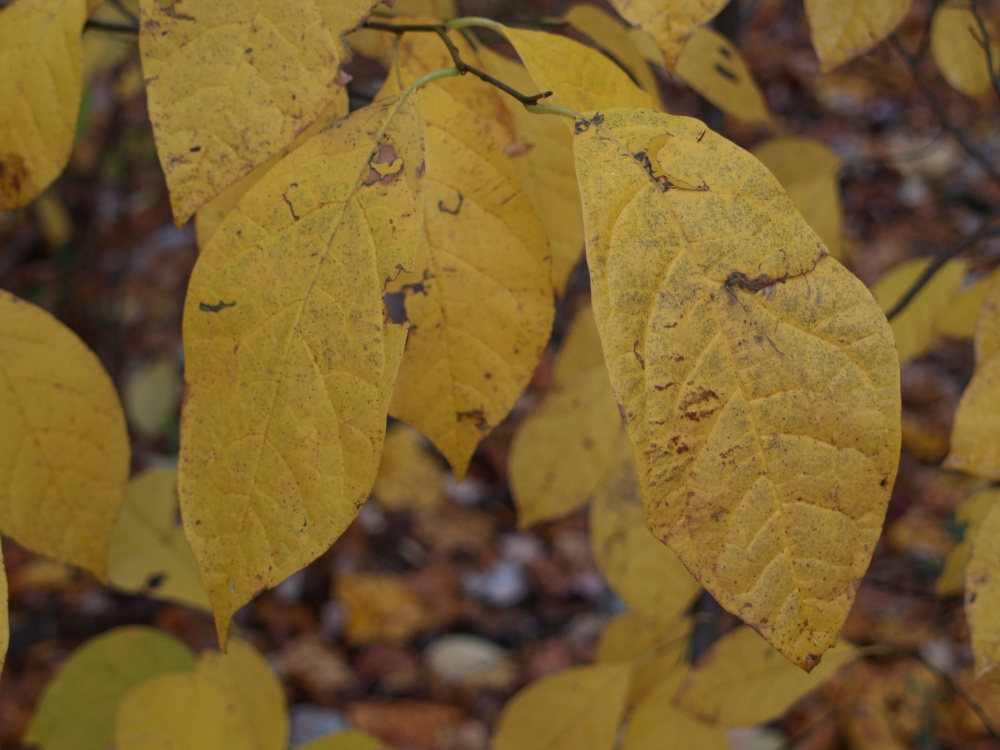
Beneath the tall canopy of maples and tulip poplars are masses of native shrubs, mostly spicebush (Lindera benzoin, above) that are notably glowing in contrast to the maples above. The leaves of Ginkgo (Ginkgo biloba, at top) are most remarkably yellow, but those dropped weeks ago, early it seems though my clock is off and it seems impossible that the season is so far along.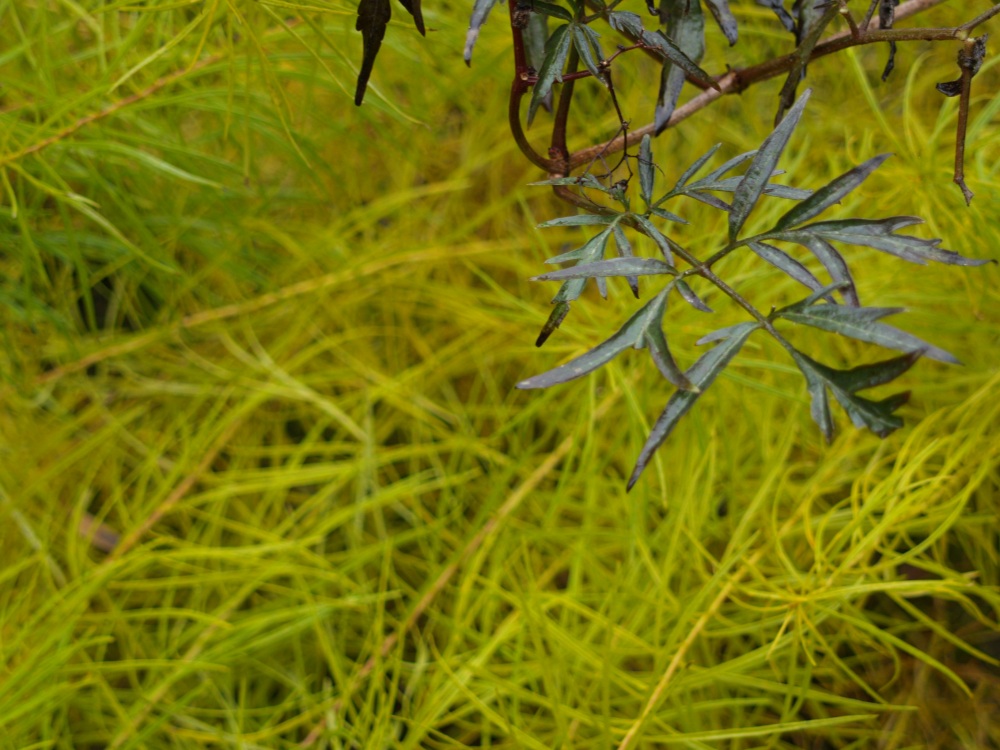
In early November, the arching stems and golden, threadlike foliage of Arkansas blue star (Amsonia hubrichtii, above) fills spaces between shrubs. Here, is yellow foliage so marvelous that the gardener notes that he must plant more. This seemingly indestructible perennial is lovely in flower, with attractive foliage through much of the year. But, in autumn it shines.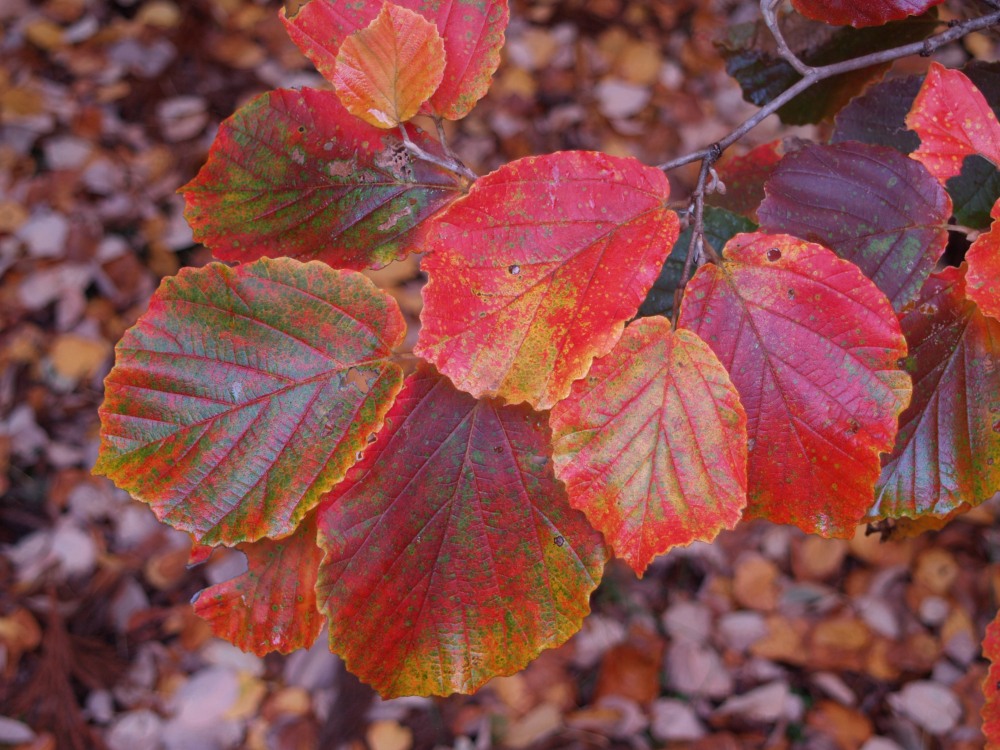
The witch hazels break the monotony of yellow. ‘Diane’ (Hamamelis x intermedia ‘Diane’, above) is a bit too shaded to grow with the vigor of other witch hazels in the garden, but still it flowers dependably in late winter, and its autumn foliage color is superb. There are reds and yellows, and often splotches of both on a single leaf. Only the fernleaf Japanese maple (Acer japonicum ‘Aconitifolium’, below) is its equal in this garden.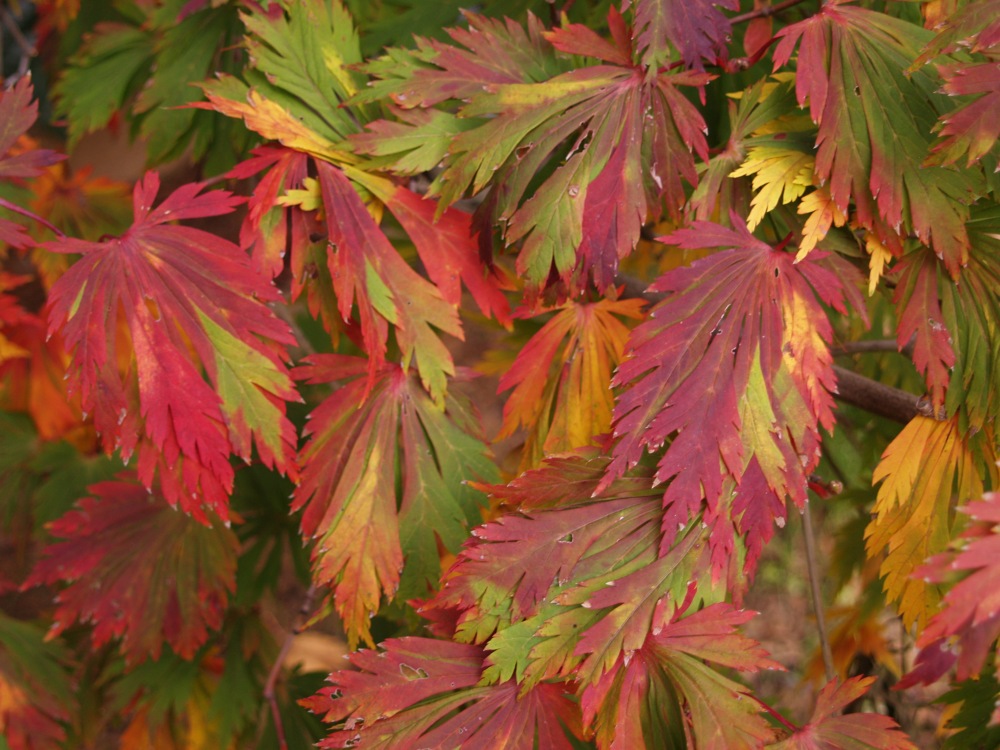
The vernal witch hazel (Hamamelis vernalis, below) is an extraordinary tree, with tiny yellow to rust colored flowers that persist through much of the winter. Its leathery leaves are pleasantly attractive through spring and summer, but in autumn the soft yellow is quite marvelous.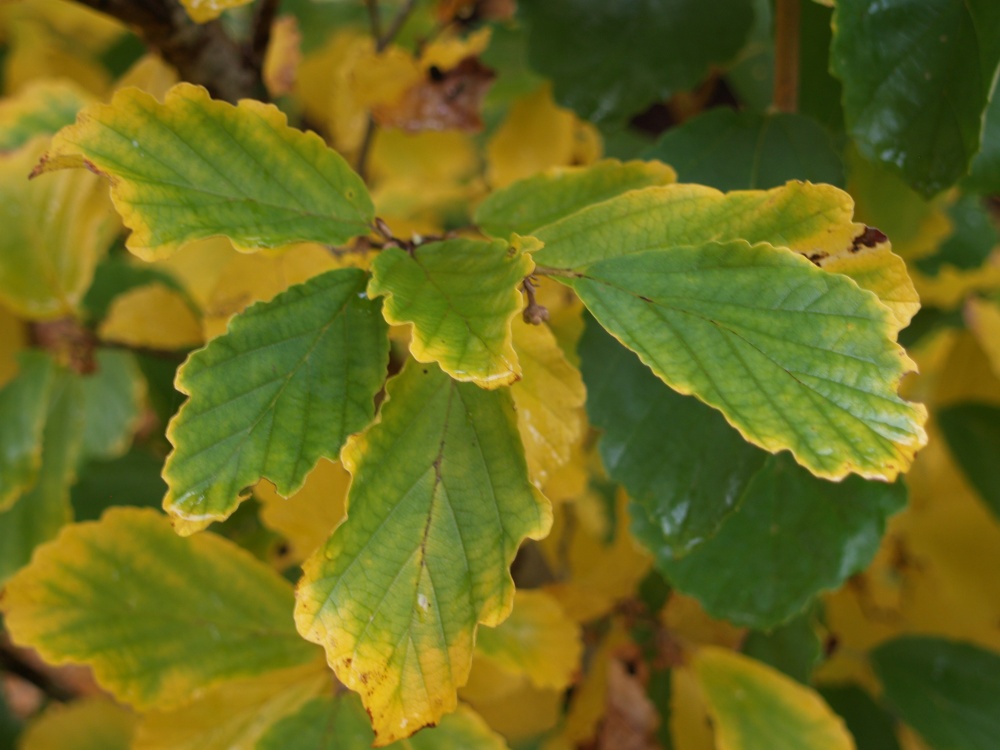
While witch hazels and Japanese maples offer combinations of yellow and red, the dogwoods turn to crimson early in autumn, and leaves hold for many weeks. The native dogwood changes to red weeks before other trees acknowledge the change of seasons, and Chinese (Cornus kousa) and hybrid dogwoods (Cornus x ‘Celestial Shadow’, below) turn later, but without the abundant berries of the native that now are nearly ripe for picking by neighborhood birds.
The fernleaf japanese maple is extraordinary! I don’t think I’ve ever seen leaves that vibrant and interesting until now!